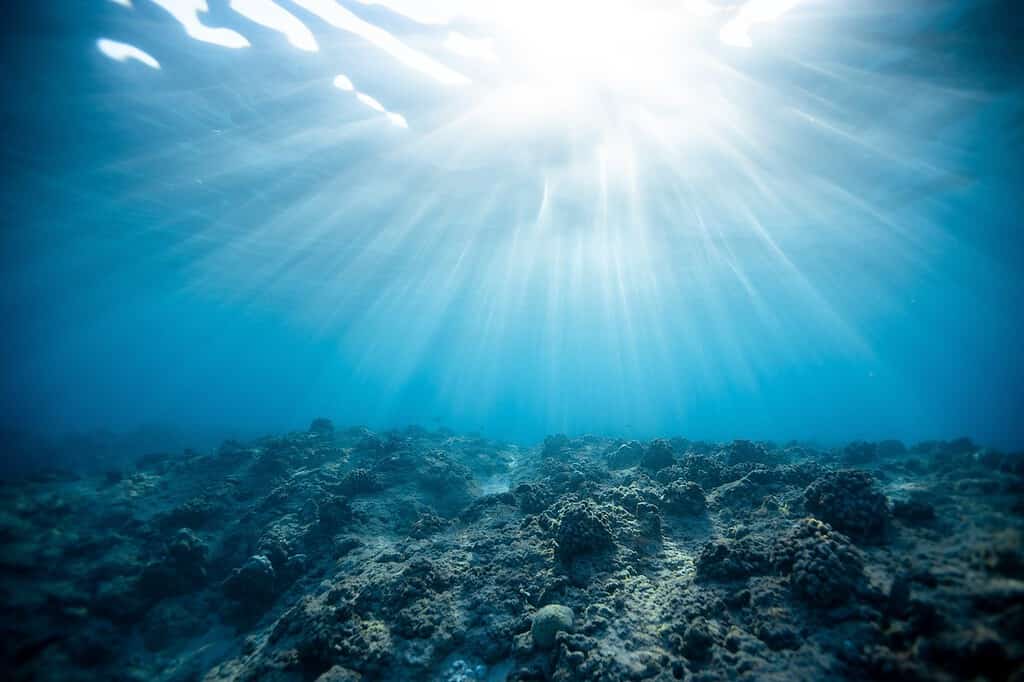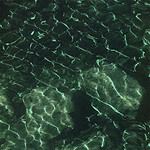Hi there!
I’m Adam. Have you ever wondered how the world of cenotes came to be?

Well, then, you are in the right place. These beautiful sinkholes are believed to be formed from the impact of the Chicxulub Asteroid more than 60 million years ago. When it impacted, it caused fractures in the limestone, which gave way for water to work its magic, eroding away for millions of years and causing subterranean rivers which ate away at the limestone until boom, the roof of the underground waterway clasps and a new bouncing baby cenote is born.
This is just the beginning, though. They are so much more than a sinkhole with beautiful clear water. They are some of the world’s oldest natural wonders that have captivated the scientific community for years! In this article, I’m going to cover how cenotes were formed, if they are caves, what’s at the bottom, how many are there really, and even the difference between cenotes and sink wholes, plus some fun facts along the way!
Shameless plug-in time! I love discovering and sharing new wonders. If you’re a fellow journeyer, you need to get in on this. Join me and Francia in our weekly newsletter, packed with fresh blogs, amazing tips, epic history, and exciting discoveries. Don’t wait. Jump on board!
Subscribe to our newsletter!
Don’t miss the opportunity to dive headfirst into this extensive series I’ve been crafting for almost 3 weeks now, all revolving around the fascinating topic of cenotes. As you read from start to finish, you’ll evolve into a true expert on these natural phenomena. It’s a tour that exposes you to all of the must-see spots, the intriguing history, and get all the insider tips and tricks you can stand, plus so much more! So, are you ready to Journey Together on this exciting adventure? Then start your journey here! (insert link)
Ready to get started? Then Let’s Journey Together!
Table of Contents
How the Chicxulub Asteroid Impact Led to the Formation of Cenotes

As I had mentioned earlier, it is believed that they found their start as a result of an asteroid that was given the loving name of Chicxulub Impactor. So how does this asteroid tie into our cenotes? We jump (jump, huh? Jump, like in swim… ahh, never mind…dad jokes hurt sometimes) right into that in a second, but first, let’s learn some more about the Chicxulub Impactor and the crater.
What Was The Chicxulub Impactor
The Chicxulub Impactor was a large asteroid that measured a whopping 11-81 kilometers or 6.8-50.3 miles! Some that’s crazy to think about, to give you an idea of just how massive this thing was.
The asteroid was slightly less than twice the length of Manhattan Island in New York! Which is approximately 13.4 miles long. Let me put it in a different light. If you were to go 60mph, it would still take you around an hour to travel the same distance as this asteroid is wide! I still can’t get over that.

What is even scary is just how fast it was traveling when it hit the earth! It is estimated to have been traveling at 20 kilometers per second, or 72,000 kph or (around 44,700mph), when it hit the Earth.
To give you some context, the average bullet from a gun travels around 2,200-4,400 kph or (1,300 to 2,700mph) so that means this asteroid was traveling roughly 16.5x faster than an average bullet!
Chicxulub Impactor And Its Crater
Given that we know the size and speed of it now, It makes you wonder what was the size of the crater. Well, it is defiantly impressive, At an astounding 150 kilometers or about 93 miles in diameter and a crazy depth of 20 kilometers or about 12 miles. It is no wonder it contributed to the extinction of the dinosaurs.
Just imagine with me where 90 miles of dirt and 12 miles of earth went. That’s 352,500,000 cubic kilometers, or around 84,571,200 cubic miles of earth was displaced during the impact. There was sure to be some loss of earth due to it vaporizing with such a great energy transfer.
This earth settled all around the earth and was even sent so high up in the atmosphere and space, blocking out the sun and causing the earth to cool. Leading to plant life dying, which leads to a lack of food for our Dino friends. Not to mention most of the dinosaurs were not equipped to handle the cold. All of this contributed to them dying off.
This one crater is evidence of the largest asteroid to hit Earth in the last 1 billion years. But enough about all of this, what about the cenotes, you say? Alright, alright, I hear you. Guess I got carried away.
How Did This Asteroid Form The Cenotes?
So how did this impact contribute to the formation? Well, the energy was so great that it even fractured the limestone that makes up most of the land in the Yucatan. They touch on that at the end of the video above.
The theory behind this is when the impact happened. It hit with such force that it fractured the limestone of the area. And forced water into the fractures by means of hydraulic pressure resulting from the water and land being compressed. This left millions of fractures ranging from small to large, and Over time, these fractures weakened the limestone allowing water to erode it away, leading to underground rivers and cave systems.
Once these cave systems grew big enough to start reaching the surface, the land above collapsed, giving us the formation that we love to swim into this day.
This is all theory, of course, but there is some very sound and convincing evidence around it. The best one is the ring of cenotes that are formed around the edge of the Chicxulub crater. Take a look at the video below. It’s quite awesome.
So what can we take away from all of this? Well, what I got is the next time we have such a big asteroid hit, that means we get new places to swim! In all seriousness, there is still a lot of research going into this, and we have made some pretty big headway, but at the end of the day, all we will ever have is theories as to how these Mexican sinkholes were formed because the only way to truly know if to have been there.
At least we have a good ever-evolving understanding of it. So I mentioned earlier that the water and fractures caused rivers and caves to form but is a cave a cenote?
Are Cenotes Caves

they could be considered a type of cave as they are natural underground reservoirs.
They are formed when the limestone bedrock, characteristic of areas like the Yucatán Peninsula in Mexico, collapses and exposes the groundwater underneath.
This can create a range of structures, from open-air pits to cave-like structures with small openings at the top. Some of these caves even have intricate cave systems and underground rivers connected to them. And it is believed that almost all cenotes are interconnected through these cave systems.
However, not all cenotes are fully enclosed like typical caves, so they represent a unique category of subterranean formations.
The Longest Underwater Cave In The World

Speaking of subterranean formations, I was digging around and found something new that I was previously unaware of! The Yucatan is home to the longest underwater cave system in the world at an astonishing 215 miles (347 kilometers)!
Want to know something even more awesome than that? It is classified as a cenote system, The Sac Actun system, to be exact.
The Sac Actun system is located in the Yucatan Peninsula of Mexico, near Tulum. The Sac Actun is considered to be a cenote, and it serves as an access point into the vast underground water system. How vast is it? Well, it is famous for being the longest underwater cave system in the world. Which in turn makes it a popular spot for cave diving. The system is made up of a network of cenotes, as mentioned earlier.
What Is At The Bottom Of A Cenote

The bottoms can vary widely depending on their size and formation.
Some cenotes might have a sandy or muddy bottom, while others are rocky due to the underlying limestone. Generally, when one has a current due to being connected to a water system, the majority of the sandy sediment will be washed away, leaving rock or larger particulate behind.
It’s not uncommon to find ancient fossils or even archaeological artifacts. As we covered in another article, cenotes were significant to the ancient Maya civilization. This article is really worth the read if you like this one. It dives deep into the history of cenotes with 1000s of years worth it’s a fun read. Check it out here https://juntosjourneys.com/the-secret-history-cenotes-mayan-underworld/
Where Is The bottom

Some cenotes, especially those that are part of an underwater cave system, may not have a bottom that’s reachable without specialized diving equipment due to their extreme depth. With an average depth of 10-30ft just at the water’s edge! They can even be 100-plus feet in the middle, depending on the cenote.
Depending on the cenote, it is not uncommon to see some aquatic life. This isn’t as common as you may think unless it is connected to another water source, though from time to time, you will still see a fish or two.
Cenotes Are All Unique
Each one is unique, which is what adds to its beauty, so the contents at the bottom can significantly differ from one to another. If you are close to a Mayan site, you may find artifacts. In the jungle, you could find animal bones; close to the sea, you might find some fish. They’re all different, and that’s one of the main reasons why I really want to learn how to scuba dive to see it all for myself.
*Fun Fact:
Diving in a cenote/cave can be very dangerous in the case of ones with silt bottoms. Stirring up the silt at the bottom can lead to something called a Silt-Out. Greatly reduces visibility and is one of the leading causes of death among experienced cave divers.
What Is The Difference Between A Cenote And A Sinkhole?

A sinkhole and a cenote are both types of geological formations where the surface layer collapses and expose the groundwater beneath. The key difference is largely related to their geography and context.
A sinkhole refers to a depression or hole in the ground caused by some form of collapse of the surface layer. They can occur anywhere in the world and are often associated with the dissolution of soluble rocks like limestone, dolomite, or gypsum.
So if your thinking, “then they are the same thing,” you would be correct. They are both formations with similar attributes, but a cenote, on the other hand, is a type of sinkhole that is normally found in the Yucatán Peninsula of Mexico.
These are formed when limestone bedrock collapses, exposing groundwater underneath, similar to a normal sinkhole, but they are often linked with underground water systems and even the sea.
Have The All Been Discovered And Recorded?

No, Not all of them have been explored or recorded. Currently, there are an estimated 5000-10,000 cenotes in the Yucatan alone, but that is just an estimation. There could be even more. A lot of people just split the middle and say there are 6000 of them.
Many of them have gone unrecorded or fully explored due to the remote nature of some of them or lack of general access, meaning that a team would probably have to be assembled to explore them. We do have to remember that most of the Yucatan is a protected jungle.
There is also another issue with cataloging all of the cenotes that exist. This is because new ones are always forming due to their geological nature. As erosion takes place, eating away at the limestone roofs of enclosed caves collapses, and a new one is born.
*Fun Fact 2:
The majority of the know cenotes follow the ridge of the Chicxulub crater.
Forming our final thoughts about cenotes

There you have it, fellow journeyers. We’ve traveled deep into the realms of cenotes surfaced with a renewed sense of wonder for these Mexican marvels.

The formation of cenotes is thought to be the direct result of the mighty Chicxulub impactor and is a reminder of the Earth’s dynamic and often dramatic past. Though they were born out of catastrophe, today they are teeming with life, both human and animal, who are both there enjoying the quiet beauty.
From the astounding geological formations to the crystal-clear waters and the secrets they house at their bottoms, cenotes are a testament to nature’s resilience and creativity. So whether you consider them caves, sinkholes, or natural swimming holes, one thing is clear – cenotes are captivating, and each one holds a unique story etched into its limestone walls.
Thank you, journeyers, for joining me on this chapter of my journey.
Before you go, remember to explore the other articles of this awesome series that I’ve put together. Dive into everything about cenotes – and guess what? You’ll turn into a cenote whiz by the time you’re done reading. Spot the coolest places, uncover the things not to do, score all the best tips, and so much more. If you love traveling, history, or all of the above, this is for you! Let’s Journey Together? (insert link)




